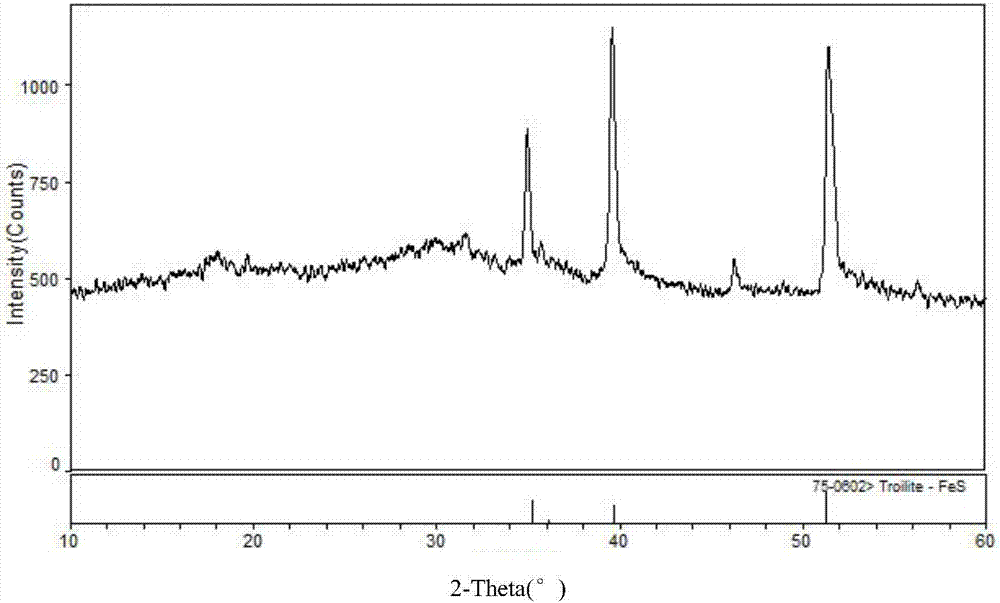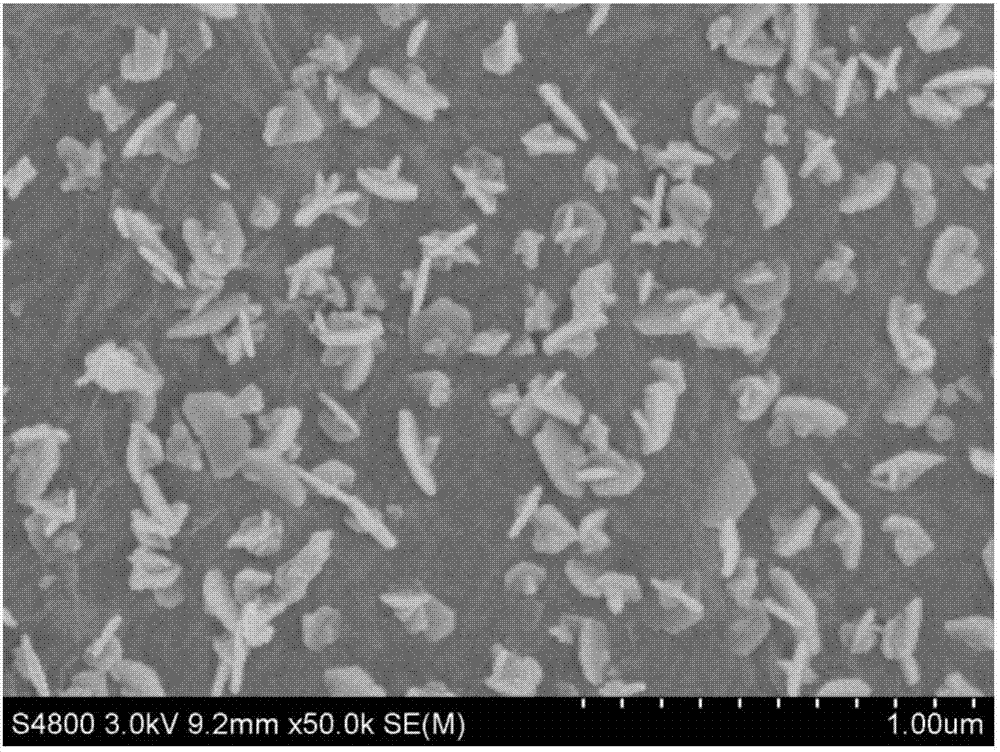Preparation method of FeS/RGO nano composite sodium-ion battery negative electrode material
A sodium ion battery and negative electrode material technology, applied in the field of electrochemistry, can solve the problems of low conductivity, electrode material shedding, volume expansion, etc., achieve cycle and rate performance improvement, simple preparation method, and improve conductivity.
- Summary
- Abstract
- Description
- Claims
- Application Information
AI Technical Summary
Problems solved by technology
Method used
Image
Examples
Embodiment 1
[0028] 1) Dissolve commercially available graphene oxide in deionized water to prepare a 2mg / mL solution, and use an ultrasonic generator to sonicate for 12 hours at a power of 300W to form a uniformly dispersed suspension of graphene oxide, which is referred to as suspension A ;
[0029] 2) Add 1g of analytically pure iron acetylacetonate to 50mL of acetone, ultrasonicate for 10min with a power of 300W, wait until the iron acetylacetonate is fully dissolved, then add it to suspension A to prepare a mixed solution of iron salt and graphene oxide , wherein the volume ratio of deionized water and acetone is 1:1, the concentration of iron acetylacetonate is 10 mg / mL, and the concentration of graphene oxide is 1 mg / mL, which is recorded as mixed solution B;
[0030] 3) Stir and heat the mixed solution B prepared above, the stirring rate is 140r / min, the heating temperature is 100°C, heat and evaporate the solution until the remaining amount is 50mL, that is, the acetone is complet...
Embodiment 2
[0037] 1) Dissolve commercially available graphene oxide in deionized water to prepare a 1mg / mL solution, and use an ultrasonic generator to sonicate for 12 hours at a power of 300W to form a uniformly dispersed suspension of graphene oxide, which is referred to as suspension A ;
[0038] 2) Add 1g of analytically pure iron acetylacetonate to 50mL of acetone, ultrasonicate for 30min with a power of 300W, wait until the iron acetylacetonate is fully dissolved, then add it to suspension A to prepare a mixed solution of iron salt and graphene oxide , wherein the volume ratio of deionized water and acetone is 1:1, the concentration of iron acetylacetonate is 10mg / mL, and the concentration of graphene oxide is 0.5mg / mL, which is recorded as mixed solution B;
[0039] 3) Stir and heat the mixed solution B prepared above, the stirring rate is 140r / min, the heating temperature is 100°C, heat and evaporate the solution until the remaining amount is 50mL, that is, the acetone is complet...
Embodiment 3
[0044] 1) Dissolve commercially available graphene oxide in deionized water to prepare a 1.5mg / mL solution, and use an ultrasonic generator to sonicate for 12 hours at a power of 300W to form a uniformly dispersed suspension of graphene oxide, which is recorded as the suspension A;
[0045] 2) Add 2g of analytically pure iron acetylacetonate into 50mL of acetone, sonicate for 20min with a power of 300W, wait until the iron acetylacetonate is fully dissolved, then add it to suspension A to prepare a mixed solution of iron salt and graphene oxide , wherein the volume ratio of deionized water and acetone is 1:1, the concentration of iron acetylacetonate is 20mg / mL, and the concentration of graphene oxide is 0.75mg / mL, which is recorded as mixed solution B;
[0046] 3) Stir and heat the mixed solution B prepared above, the stirring rate is 140r / min, the heating temperature is 70°C, heat and evaporate the solution until the remaining amount is 50mL, that is, the acetone is completely...
PUM
 Login to View More
Login to View More Abstract
Description
Claims
Application Information
 Login to View More
Login to View More - R&D
- Intellectual Property
- Life Sciences
- Materials
- Tech Scout
- Unparalleled Data Quality
- Higher Quality Content
- 60% Fewer Hallucinations
Browse by: Latest US Patents, China's latest patents, Technical Efficacy Thesaurus, Application Domain, Technology Topic, Popular Technical Reports.
© 2025 PatSnap. All rights reserved.Legal|Privacy policy|Modern Slavery Act Transparency Statement|Sitemap|About US| Contact US: help@patsnap.com



